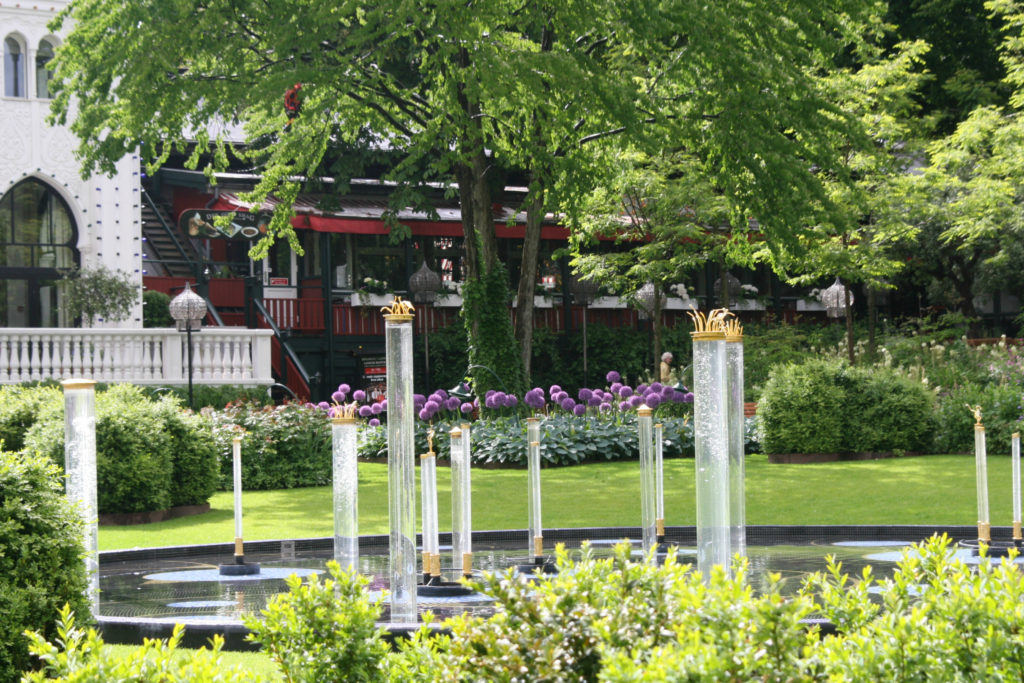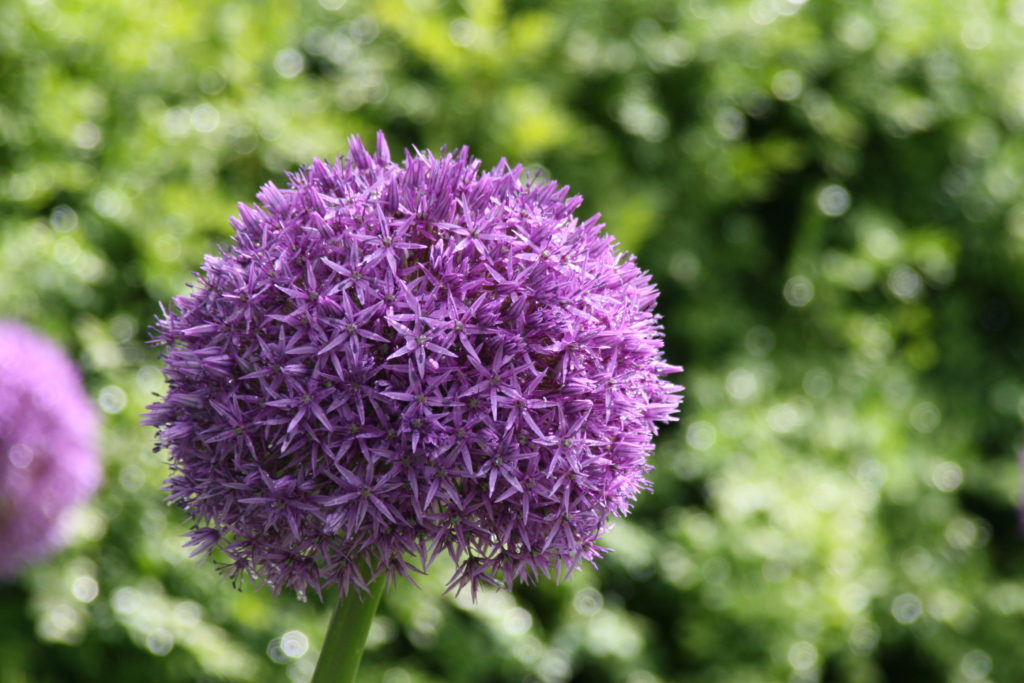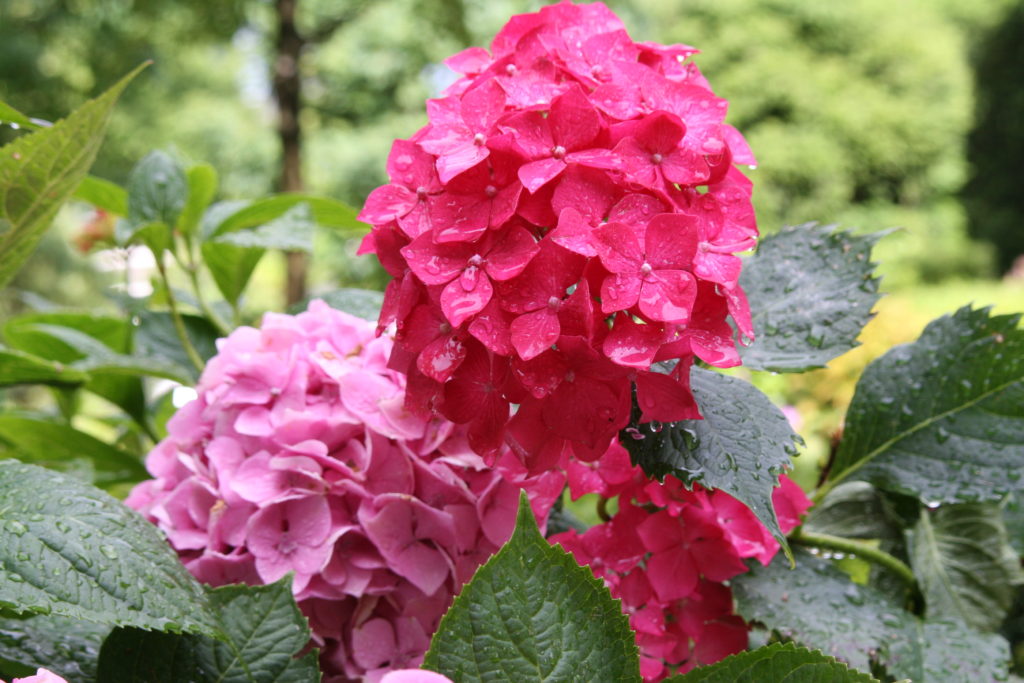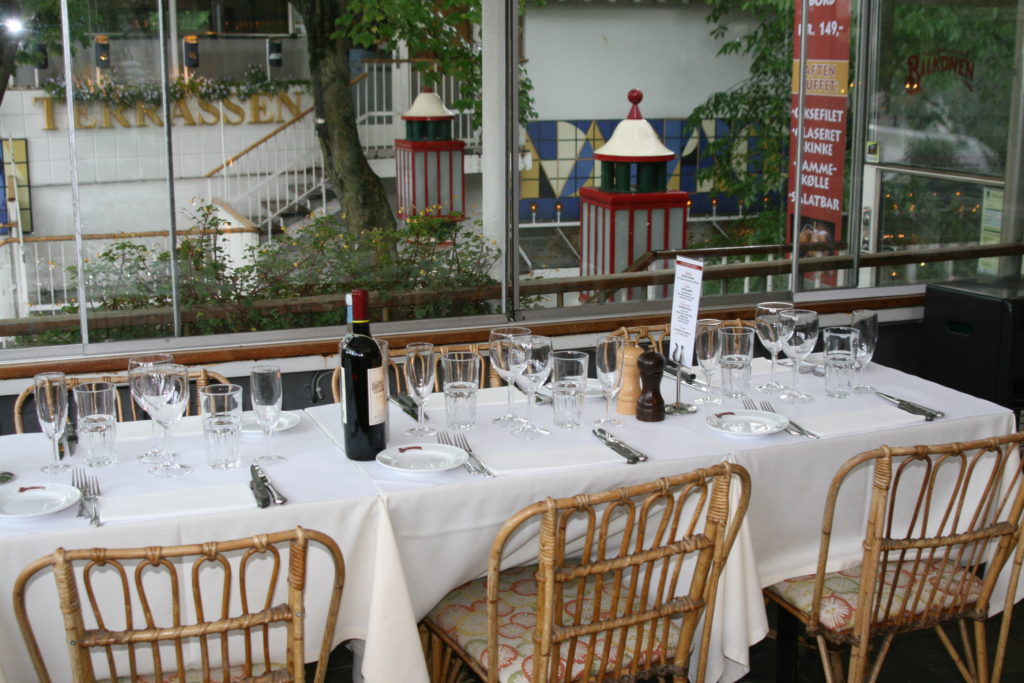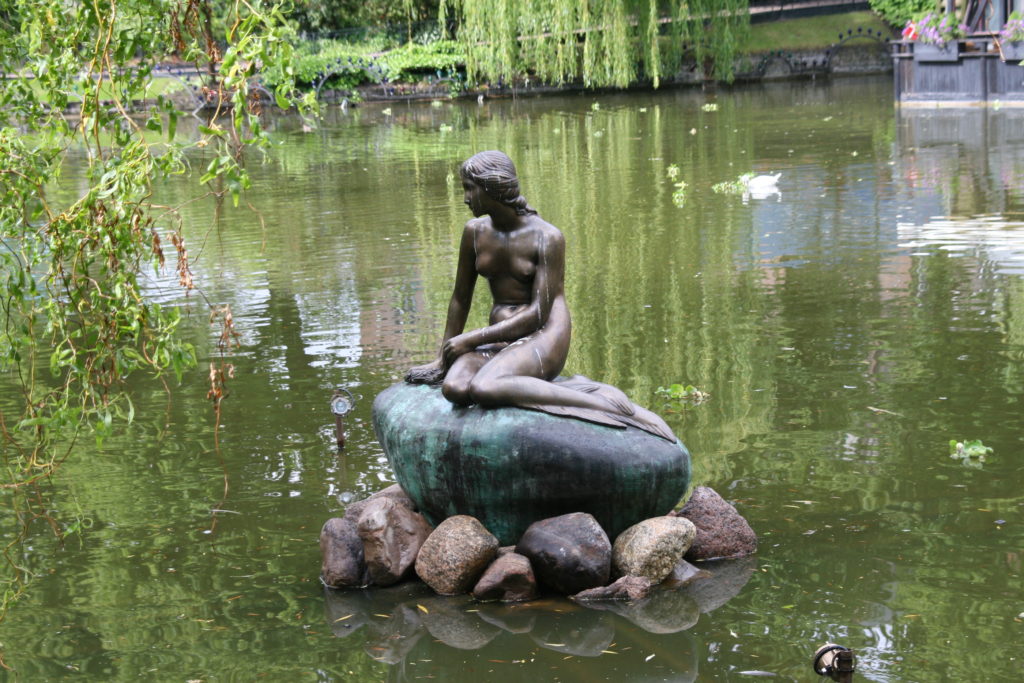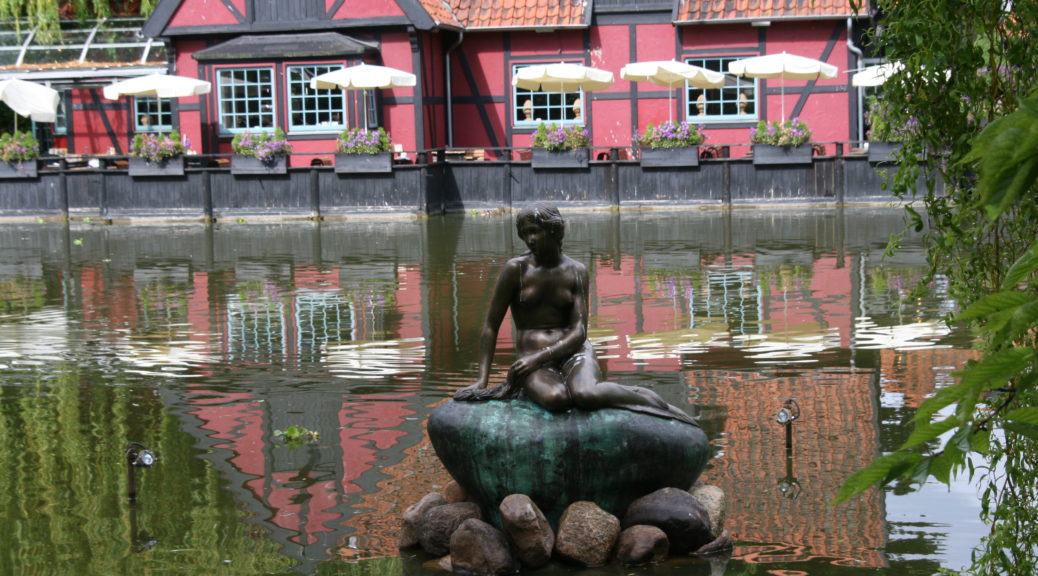
Copenhagen, Denmark
In 2010, we took a Baltic and Scandinavian cruise through Princess Cruises. We arrived in Copenhagen three days before our cruise. We had time to explore Copenhagen and also visited the island of Bornholm. In this post, I will focus on Copenhagen. The first pictures below are of the City Hall, located in City Hall Square in the central part of Copenhagen. It serves as the headquarters for the Municipal Council and also houses the offices of the Lord Mayor (there are six additional mayors, each of which heads a special committee). The City Hall opened in 1905 and is easily recognized by its clock tower. There is also a gilded statue of Absalon decorating the front facade of the building. He was a Danish archbishop and statesman in the 12th Century.
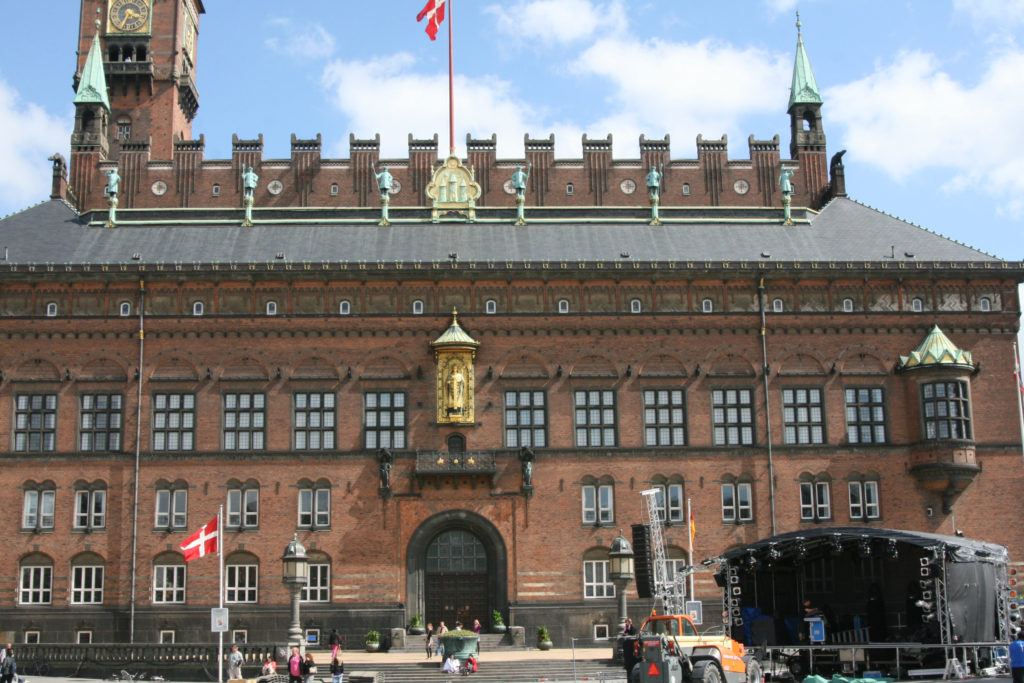
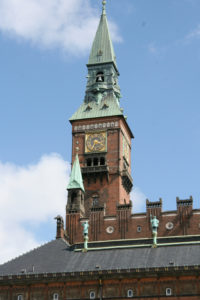
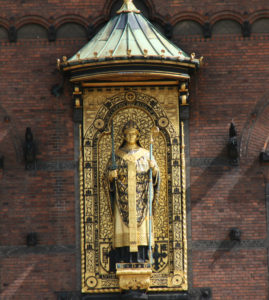
The next pictures are of Stroget Street, a popular pedestrian shopping area. Stroget connects the east and west sides of Copenhagen and actually consists of four streets linked by three squares. Bicycles are a popular form of transportation in Denmark. The government imposes a 205% import tax on cars making them extremely expensive to purchase. We saw places where bikes were stacked on top of each other. Can you imagine how difficult it would be to find your bike! There were also street entertainers such as the mime pictured below which helped create a festive spirit among the many people strolling on the streets.
The Caritas Well, also known as the Caritas Fountain, was built in 1608 and is the oldest fountain in Denmark. It is located in Gammeltor Square, one of the squares comprising the Stroget shopping area. There is a bronze statue of a pregnant woman and her children at the top of the fountain symbolizing love.
I have also included a picture of a shop, Royal Copenhagen. We went into this shop and quickly found that they have many beautiful pieces. I purchased a small figurine of a young girl looking at a book. The first Royal Copenhagen store opened in 1780 – at that time it was called the Royal Danish Porcelain Manufactory. Today they have stores in Denmark, Japan, Taiwan and Korea.
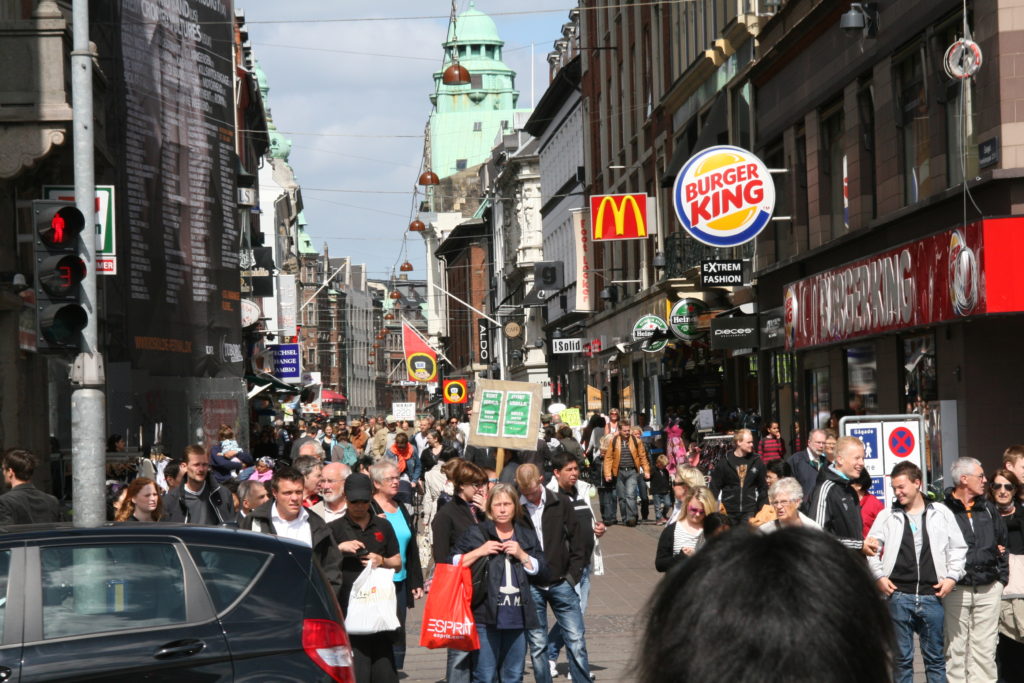
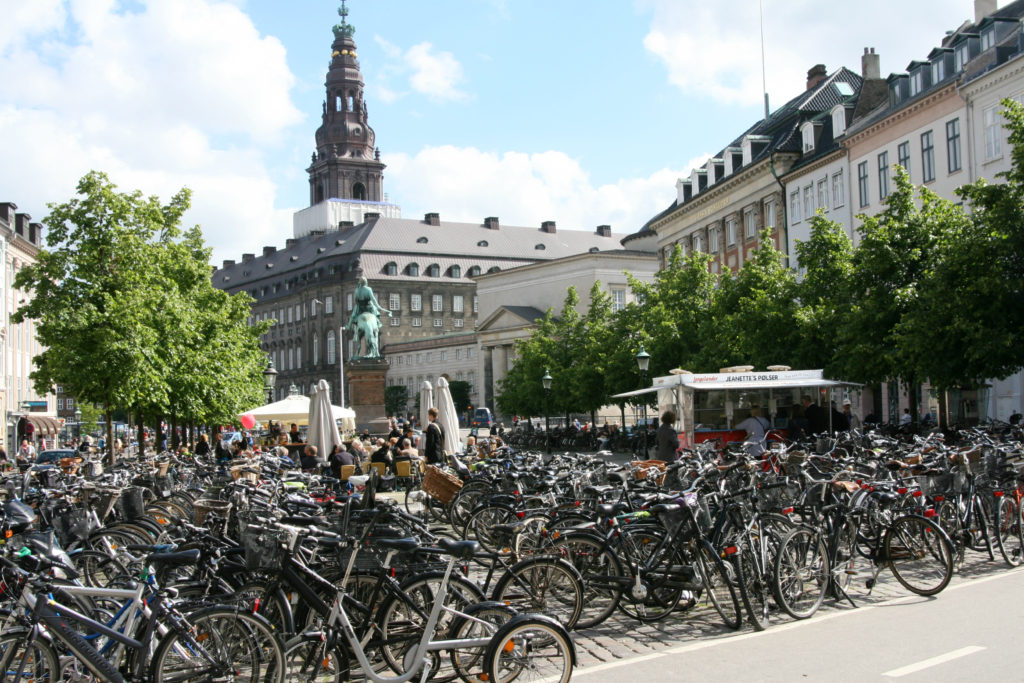
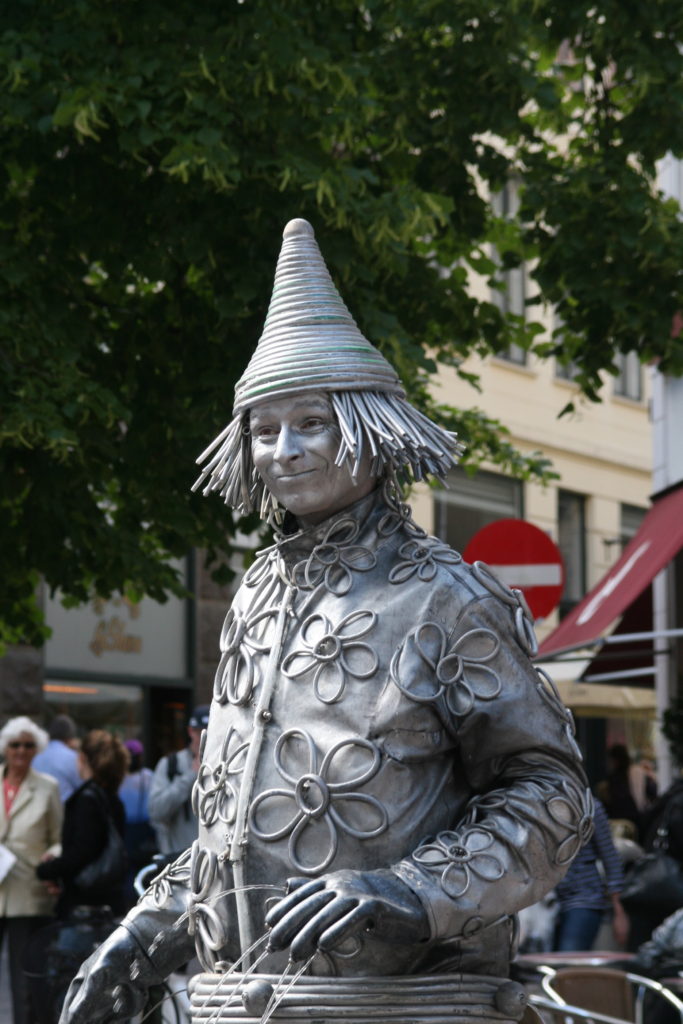
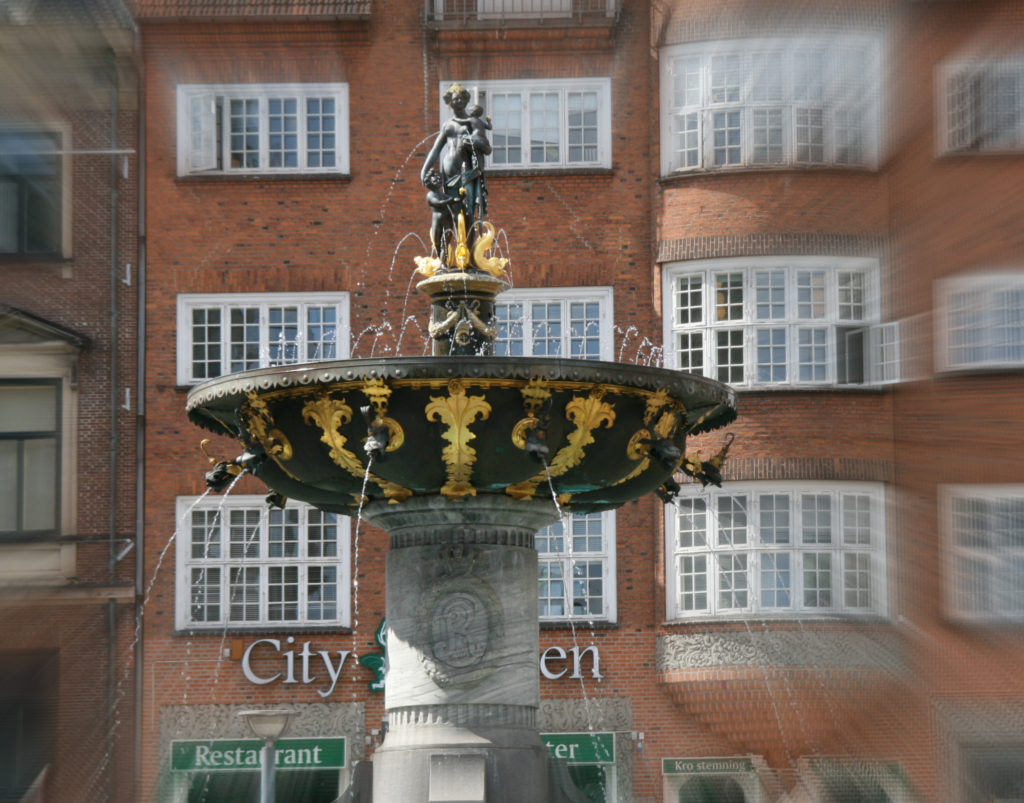
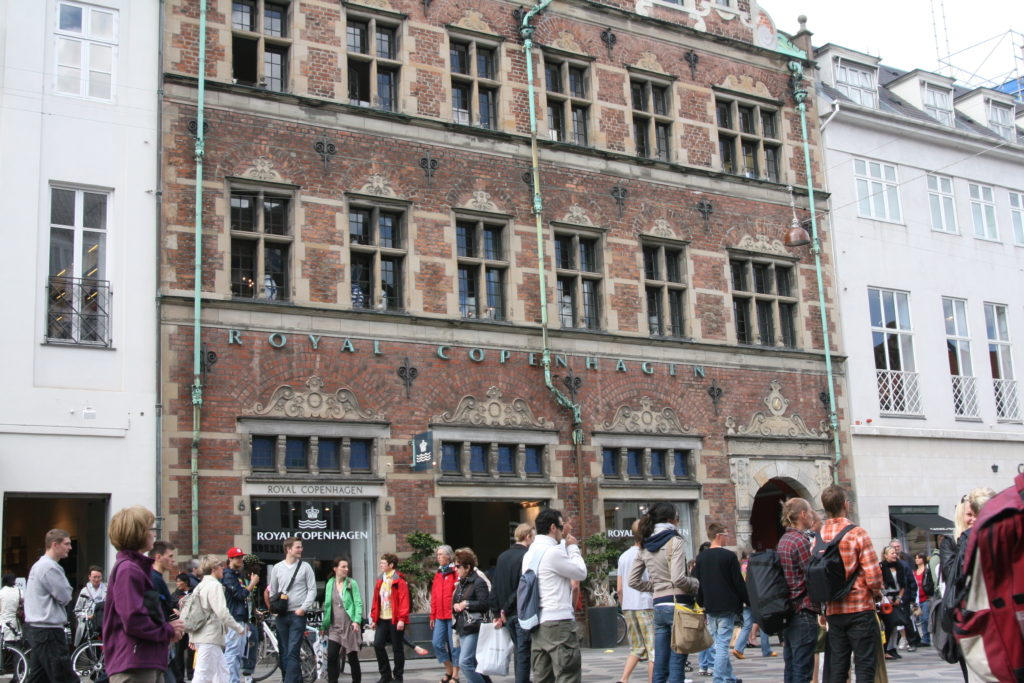
The next picture is of the Amalienborg Square. Four identical mansions were built around the square. These were initially built for noble families. At that time, royalty lived in the Christianborg Palace. After the palace burned in 1794, Amalienborg was purchased by the royal family. The Amalienborg Palace now serves as the winter home of the royal family.
As you look through Amalienborg Square, you will see a domed building. This is Frederick’s Church, more popularly known as the Marble Church. I have also included a close-up picture of the dome which is the largest dome in Scandinavia. Initial plans called for the church to be made of marble, but due to budgetary issues, these plans were discarded. Most of the church is made of limestone.
There is a statue of King Frederik V sitting on a horse in the courtyard. He served as king of Denmark and Norway from 1747 to 1766, when he died. He is described as an alcoholic but had able ministers who served Denmark well. The country was at peace during his reign. The statue was unveiled in Amalienborg Square five years after his death.
The last picture is a pavilion built in 1907 where the royals would wait for their yacht. Notice the crown at the top of the pavilion. The yacht, which we did not see, is referred to as Her Danish Majesty’s Yacht Dannebrog and serves as the queen’s residence during overseas trips or for summer cruises in Danish waters.
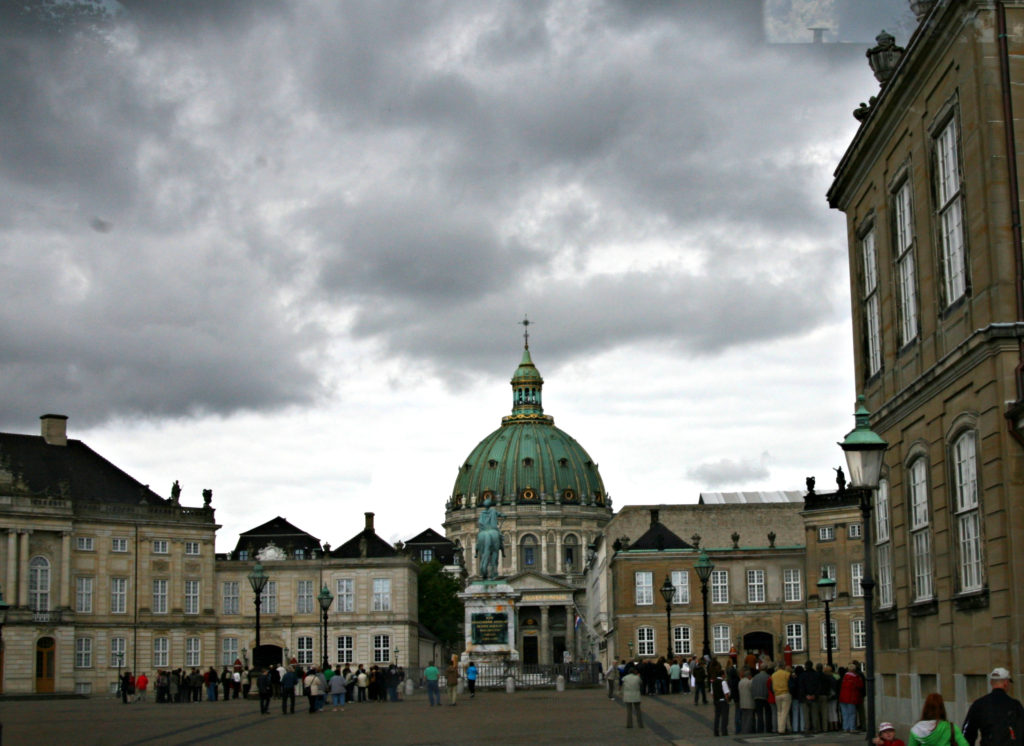
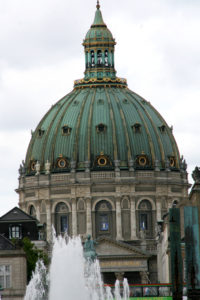
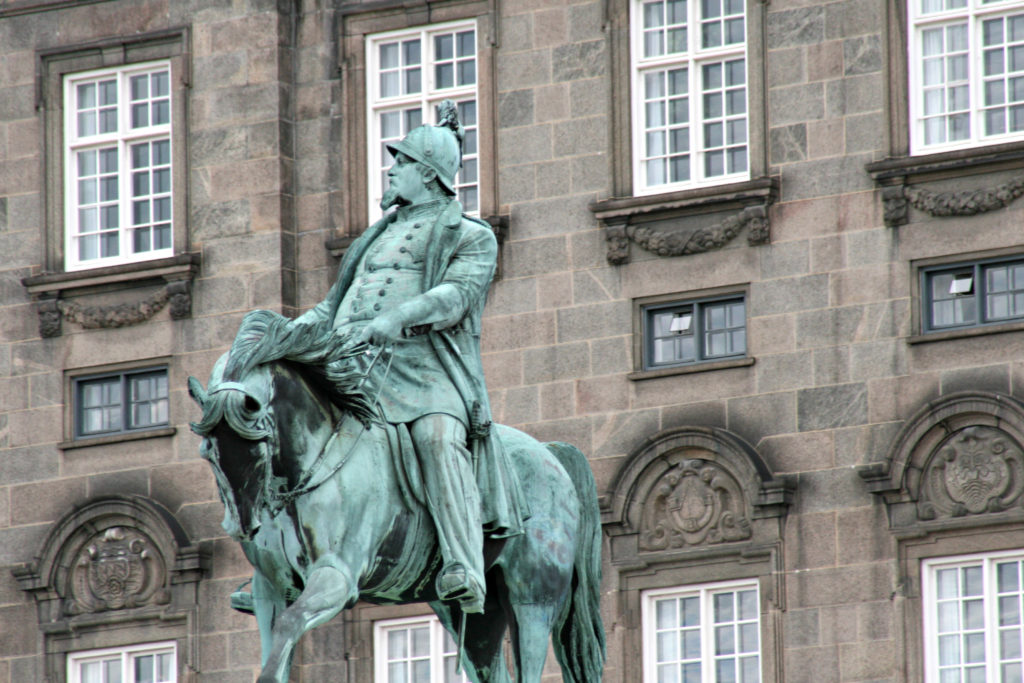
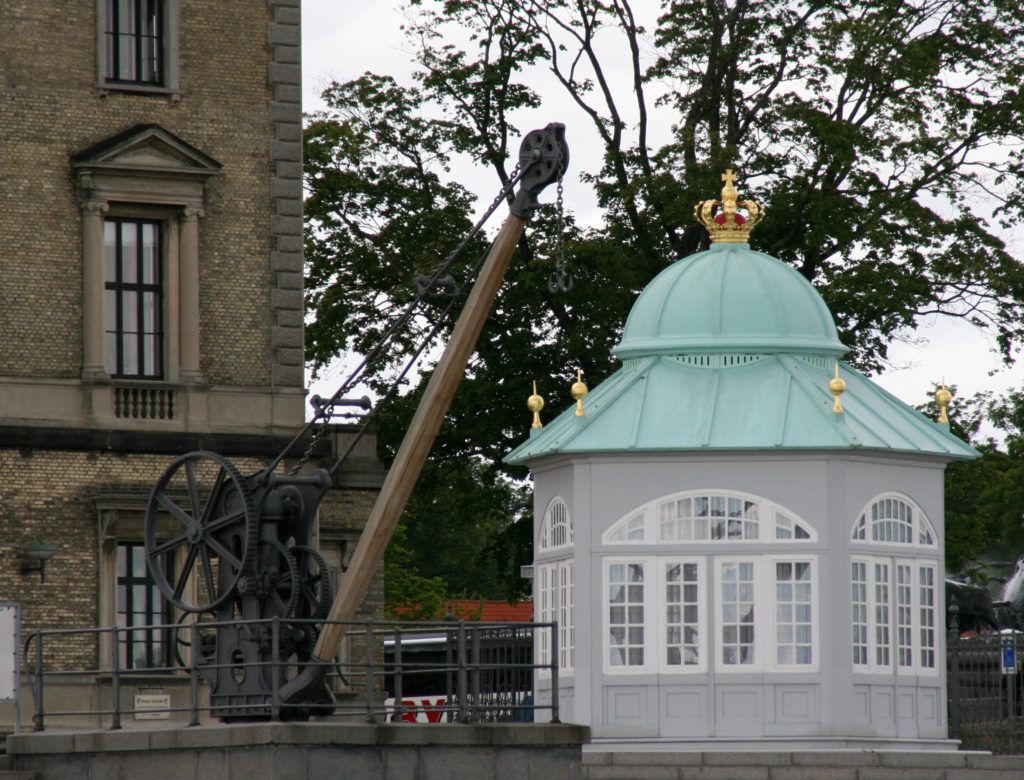
There are lots of opportunities to see historical buildings. Pictured below is the Rosenborg Castle. It was built in 1604 at the direction of King Christian IV and served as the summer residence of the royal family until 1710. Royals also used it as a residence when the Christianborg Palace burned and when Denmark was attacked by the British in 1801. Today Rosenborg Palace serves as a museum. Among its many treasures are the crown jewels.
The next picture is one of Stormbroen, or Storm Bridge. It was originally constructed in 1681 and was renovated in 1918. It was here that Danish soldiers successfully defended an attack by Sweden. The brown buildings in the next picture once housed warships in case of attack by Sweden. These structures were built on an incline so ships could be quickly deployed.
The next picture is one of the medallions on the Marble Bridge, just outside of the Christianborg Palace. The bridge runs over the Frederiksholm Canal and is at the main entrance to the palace. It was constructed n 1745. Two pavilions, one of which is pictured below, serves as the main entrance to the Christianborg Palace. They border an open drive. I have also included a closer view of the top of the pavilion.

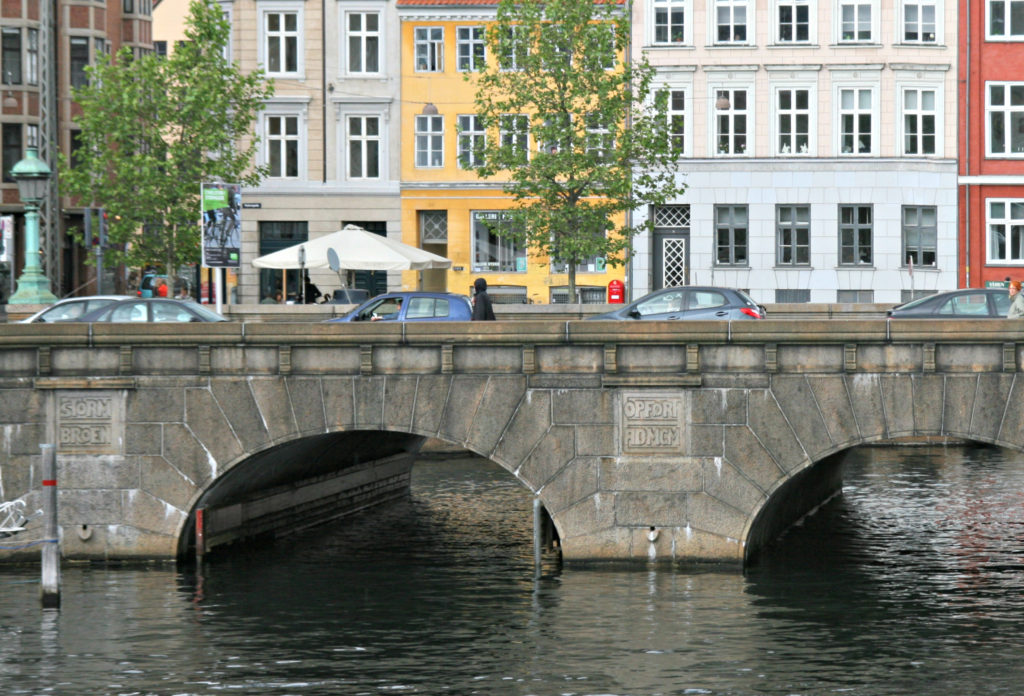
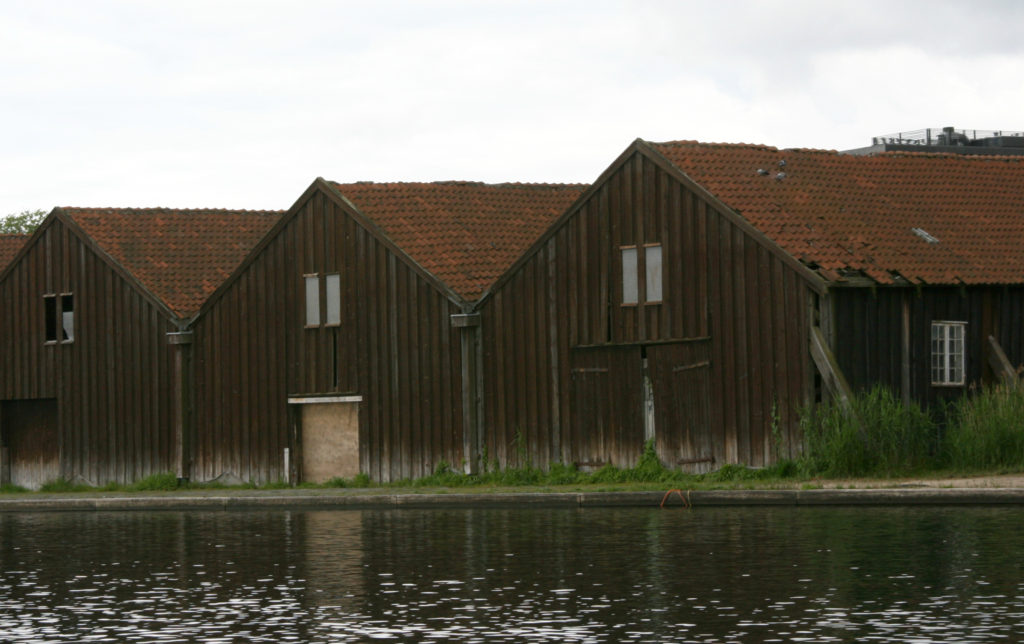
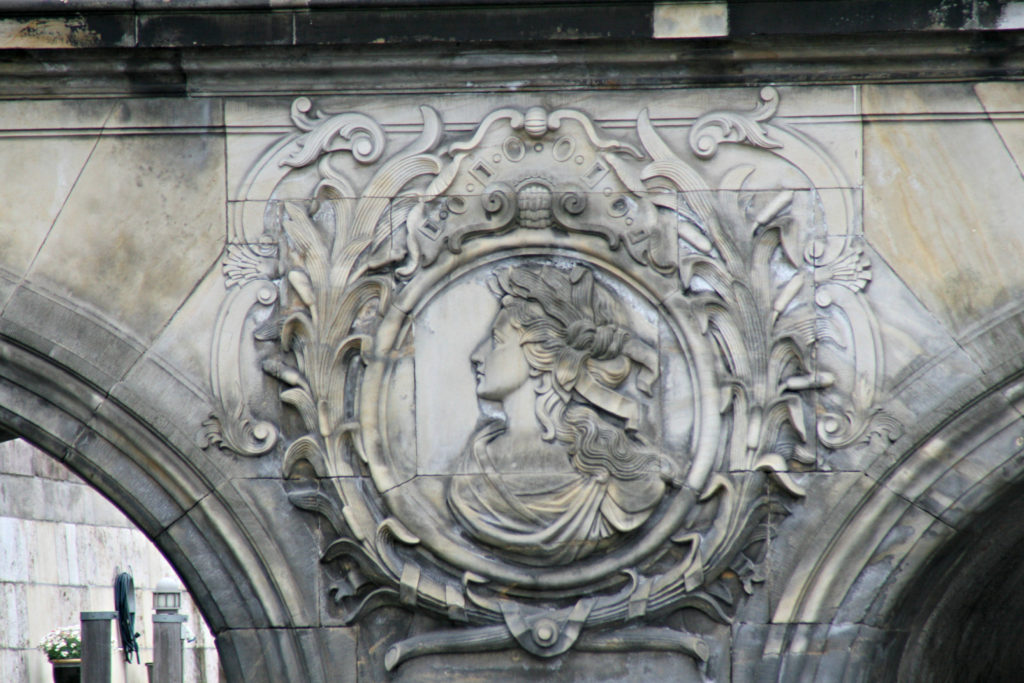
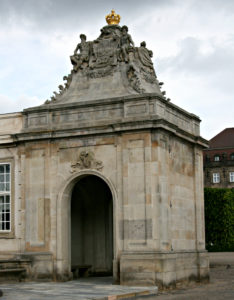
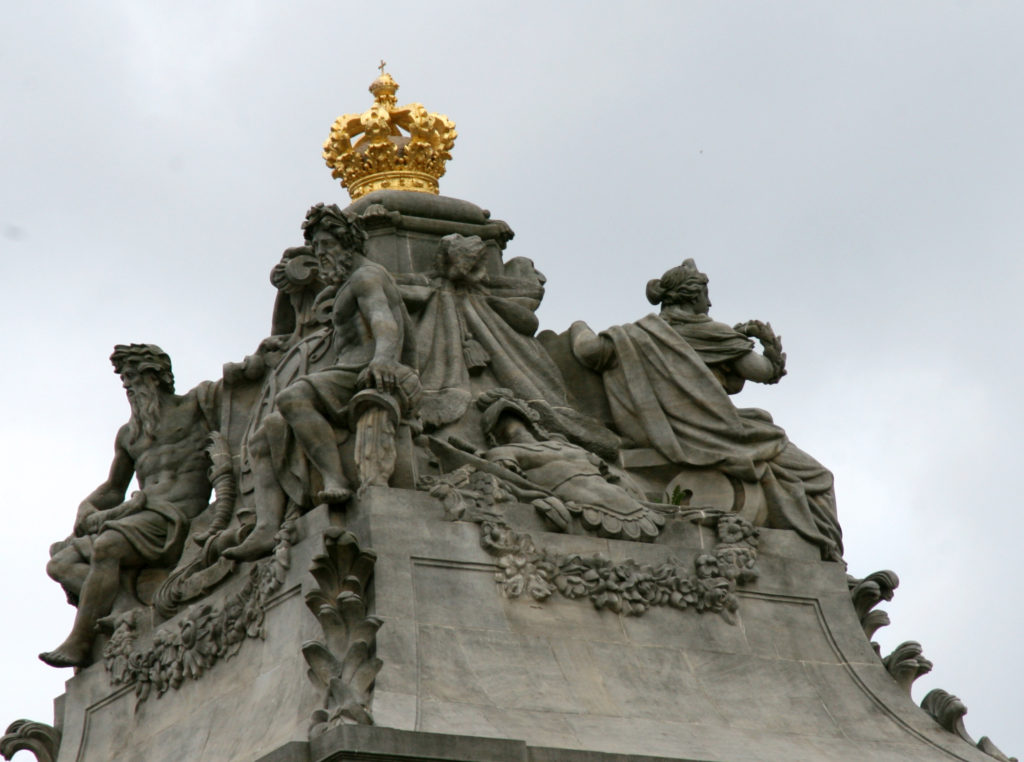
Another historical building we visited was the Round Tower, completed in 1642 under the authority of Christian IV. It is an astronomical observatory with a spiral walk that circles the hollow core of the tower 7 1/2 times. It is the only connection to the different parts of the building. The Round Tower was built to replace the observatory of Tycho Brache and for use by University of Copenhagen students. There are astronomical instruments on display. Ole Romer is one of the astronomers who studied here. In 1676, he made the first accurate calculation of the speed of light. Although scientists no longer study here, the observatory can be used by the public.
There are also beautiful views of Copenhagen from an observation deck near the top of the tower. In one of the pictures, you will see a wrought-iron lattice fence in the foreground. It was made in 1643 and incorporates Christian IV’s monogram and the letters RFP. These letters represent the king’s motto, “Regna Firmat Pietas” which in English means “Piety strengthens the Realms.” The structures that are yellow were apartments for sailors. King Christian IV wanted sailors in a confined area so they could be easily deployed. Even today, only people connected to the navy live in this housing. The last picture shows the Øresund Bridge which connects Denmark to Sweden.
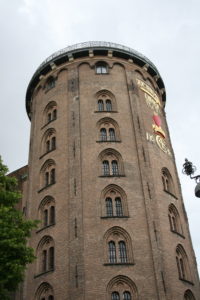
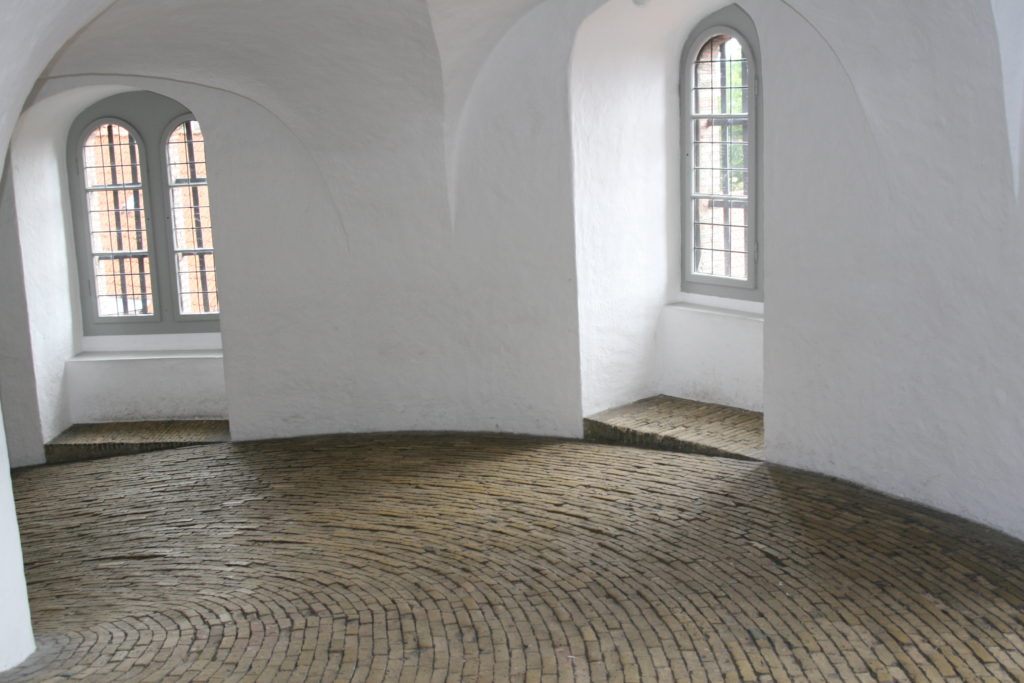
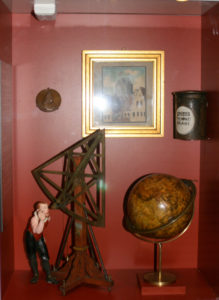
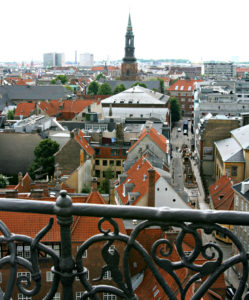
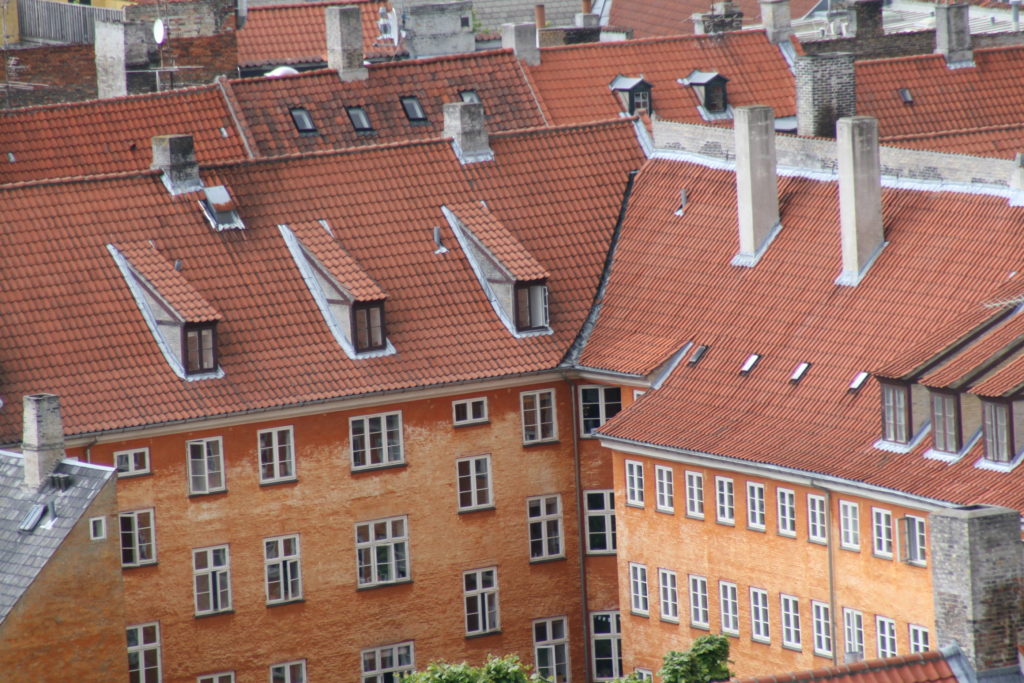
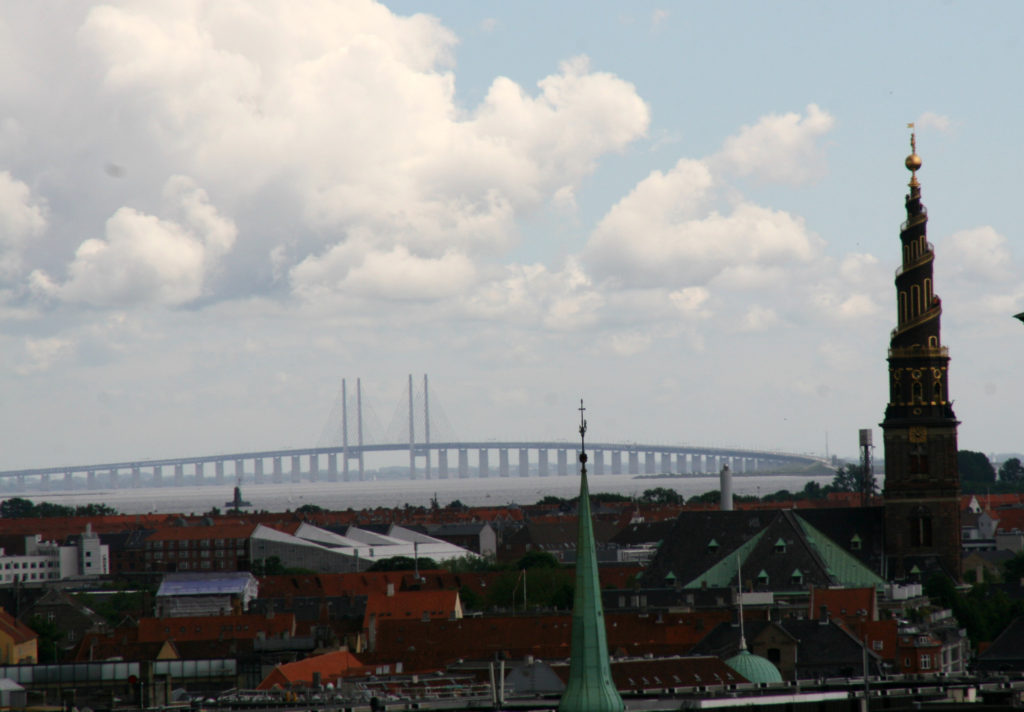
We also visited Tivoli Gardens. It is the second oldest amusement park in the world, opening in 1843. Wikipedia reports that Tivoli’s founder, Georg Carstensen received a five-year charter to create Tivoli by telling King Christian VIII that “when the people are amusing themselves, they do not think about politics.” We especially enjoyed the wonderful gardens and had a great dinner during our visit.
When we visited in 2010, the Little Mermaid was in Shanghai, China for the World Expo. It was the first time it had been moved in the past century. The Little Mermaid was sculpted by Edvard Eriksen and was completed in 1913. The Little Mermaid’s sister was loaned to the Tivoli by the artist’s descendants while the original was away. The last picture in this section is the Little Mermaid’s “sister.”
